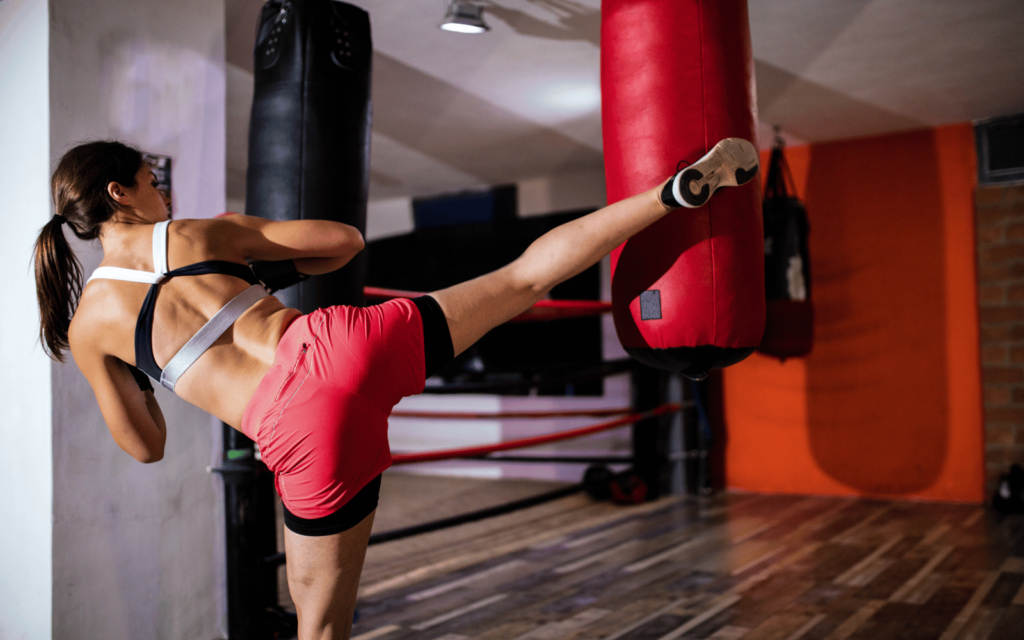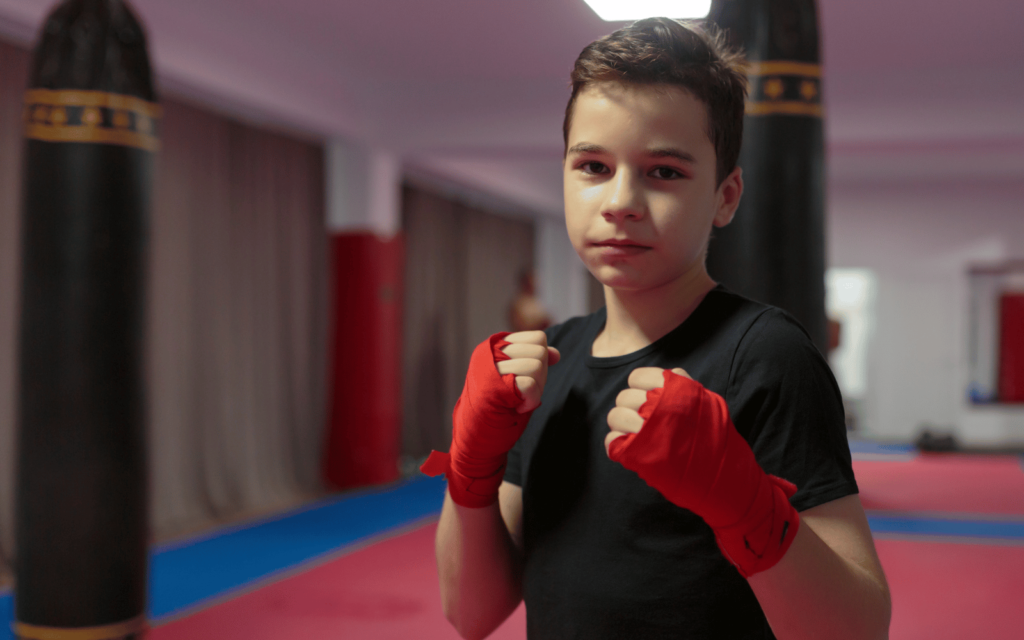Uncover the rich history, effective styles, and renowned figures of Dutch Kickboxing. A powerful martial art that has left an indelible mark on global
Born from a fusion of Kyokushin Karate and Muay Thai, Dutch kickboxing has forged some of the world’s fiercest fighters. We’ll delve into the aggressive, combination-driven fighting style. And explore its philosophy, learn about the rigorous training methods, and list some of its most notable fighters.
Dutch Kickboxing Origins
The origin of Dutch Kickboxing can be traced back to the 1960s and 1970s.
During this time, Dutch fighters started to explore and integrate different combat styles from abroad. They began training in different martial arts to create fighters capable of competing on the world stage.
Kyokushin Karate is a style known for its rigorous training and full-contact sparring. And so it’s no surprise it was one of the initial martial art forms that influenced Dutch fighters.
Created by Mas Oyama in Japan, Kyokushin caught the attention of Dutch martial artists, and they were among the earliest Europeans to adopt it.
The hard-hitting, bare-knuckle style of Kyokushin Karate became a core aspect of Dutch fighters’ technique, providing a solid base for their striking ability.
At the same time, Muay Thai from Thailand also significantly influenced the development of Dutch Kickboxing. Dutch martial artists witnessed the effectiveness of Muay Thai’s kicks, elbows, knees, and clinching techniques in Lumpinee Stadium. And so they began incorporating some of these elements into their training.
And you can check out a full comparison of Muay Thai vs Kickboxing here.
They were especially drawn to the practicality of Muay Thai, famous for its blend of power, speed, and lethal strikes. And over time, a distinctive form of kickboxing emerged as Dutch fighters began integrating Kyokushin Karate and Muay Thai into their training.
The unique style combined the powerful punches and high kicks of Kyokushin Karatekas with the devastating low kicks, knee strikes, and clinching of Muay Thai.
Techniques & Style of Dutch Kickboxing
At its core, the Dutch kickboxing striking styles differ from traditional kickboxing, which focuses on single precise strikes.
The Dutch style of kickboxing prioritizes constant offense and pressure with a flurry of strikes. This leaves opponents with little space or time to counterattack,
A Dutch kickboxer is trained to blend punches, kicks, and knee strikes seamlessly in swift, flowing combinations.
Dutch kickboxers utilize various punches, including jabs, hooks, uppercuts, and crosses. These punches are usually combined with kicks, creating an unpredictable and dynamic offensive strategy.
Vicious kicks include powerful low kicks aimed at the opponent’s legs, designed to impair mobility and accumulate damage throughout a bout.
Along with high kicks, borrowed from Kyokushin Karate, aimed at the head.
The Dutch style of kickboxing also emphasizes active defense through constant movement and quick counters.
Immediately after blocking or evading an attack, a Dutch kickboxer often retaliates with a counter-strike, turning defense into offense, perfect for its high-pressure fighting style.
The clinch, a technique borrowed from Muay Thai, is another critical element of Dutch Kickboxing. While in a clinch, a Dutch kickboxer can deliver knee strikes or attempt to off-balance their opponent, setting up an opportunity for a powerful strike.
Dutch Kickboxing Philosophy
The philosophy of Dutch Kickboxing is centered around aggressiveness.
It nurtures continuous aggression, versatility, and the effective integration of a wide range of weapons.
Dutch kickboxers use their whole body as a dynamic range of weapons, seamlessly combining punches, kicks, knee strikes, and defensive maneuvers.
The result is a holistic, fluid, and highly adaptable fighting approach that keeps opponents constantly on the back foot.
Training Dutch Style
Dutch Kickboxing training is an intense, rigorous process known for its practical training methods and high standards.

One famous example is Mike’s Gym, a renowned kickboxing camp in the Netherlands that has produced numerous world champions.
Like Muay Thai training, it begins with conditioning exercises to build stamina, strength, and flexibility.
Technique drills follow, where students practice the extensive range of strikes, blocks, and movements that comprise the Dutch Kickboxing arsenal.
A key feature of Dutch Kickboxing training is its emphasis on partner drills and sparring. This is where the art’s philosophy of relentless pressure and constant offense truly comes to life.
For instance, fighters at Mike’s Gym spend significant time honing their skills against training partners, allowing them to apply techniques in realistic scenarios.
Conditioning rounds, bag work, and pad work are also central to Dutch Kickboxing training methods. These intensive workouts help build power, speed, and precision.
And throughout training, fighters are encouraged to explore combinations, cultivate adaptability, and maintain a forward-moving, aggressive fighting style.
This is all meant to produce well-rounded, relentless, and adaptable fighters capable of handling any opponent in the ring.
Is Dutch Kickboxing Great for Self-Defense?
Dutch Kickboxing can be an excellent choice for self-defense. It equips individuals with skills that can be incredibly useful in real-life situations. Here are a few reasons why:
- Wide Range of Techniques: Dutch Kickboxing trains you in a broad spectrum of striking techniques, including punches, kicks, and knee strikes. This wide range of techniques means you have many tools at your disposal in a self-defense situation.
- Physical Conditioning: The intense physical training involved in Dutch Kickboxing not only teaches you how to strike effectively. It also builds your strength, speed, endurance, and agility. These physical attributes can be invaluable in a self-defense scenario.
- Aggressive Offense and Active Defense: Dutch Kickboxing emphasizes a philosophy of continuous pressure and rapid counter-attacks. This approach can be beneficial in a self-defense situation, where the goal is often to end the encounter as quickly as possible.
- Situational Awareness: Sparring and partner drills in Dutch Kickboxing improve your ability to react quickly and appropriately under pressure, enhancing your awareness and reflexes.
- Confidence: Learning Dutch Kickboxing can build personal confidence and reduce fear, vital components of effective self-defense. For instance, you won’t feel the need to prove yourself or be afraid to walk away from an unnecessary confrontation.
But remember that while Dutch Kickboxing can benefit self-defense, the ultimate goal of any self-defense situation is to ensure personal safety.

In general, we should avoid confrontations, be aware of our surroundings, and know when to escape are equally, if not more, important.
Dutch Kickboxing vs American Kickboxing
While both Dutch Kickboxing and American Kickboxing share roots in traditional boxing and karate, they have evolved distinctly due to different influences and philosophies.
As mentioned above, Dutch Kickboxing is famous for its aggressive approach, constant pressure, and emphasis on combinations. This results in a comprehensive arsenal of strikes, including punches, kicks, knee strikes, and, in some cases, elbow strikes.
American Kickboxing, on the other hand, has a more conservative approach. It tends to focus more on punches and high kicks, with rules often prohibiting strikes below the waist.
Influenced by Full-Contact (Kyokushin) Karate and Western Boxing styles, American Kickboxing typically involves less clinching and knee strikes than its Dutch counterpart. And relies more on a more singular striking approach and a stronger emphasis on footwork and evasion.
Dutch Kickboxing vs Japanese Kickboxing
The Japanese style traditionally emphasizes high kicks, knee strikes, and punching combinations.
It incorporates a diverse range of strikes similar to Dutch Kickboxing. But it often emphasizes precision and timing, with fighters carefully measuring their strikes for maximum impact.
A Japanese Kickboxing competition can usually showcase calculated exchanges and tactical maneuvering.
And so, unlike the aggressive Dutch style, Japanese Kickboxing often emphasizes precision, timing, and the tactical aspect of fighting.
But of course, it’s important to note that these are general observations. Individual fighters within each styles of kickboxing can exhibit a wide range of techniques and strategies.
Famous Dutch Style Kickboxers
The Dutch are generally big people. They’re, on average, among the tallest people on earth.
And thus, there have been some excellent heavyweight kickboxers throughout history representing the Netherlands in Glory Kickboxing, K-1 World Grand Prix, and other worldwide kickboxing events!
But not ONLY Dutch people have made a name with Dutch Kickboxing. Here are some notable fighters:
Ramon Dekkers
Ramon Dekkers was a legendary Dutch kickboxer known for his aggressive style and powerful strikes.
Born September 4, 1969, he is often credited with popularizing Muay Thai and Dutch Kickboxing in the West.
Dekkers was an eight-time world champion, earning titles across many weight classes and organizations. He was renowned for his ability to deliver devastating combinations and his willingness to face top-level Thai fighters (Nak Muay) in their homeland, earning him the nickname “Diamond” for his toughness and brilliance in the ring.
Despite his passing in 2013, Dekkers remains a revered figure in the kickboxing world.
Semmy Schilt
Semmy Schilt, born on October 27, 1973, is a Dutch kickboxer and mixed martial artist best known for his towering height and exceptional skill in the ring.
He is a four-time K-1 World GP Champion and a former Glory Heavyweight Champion. And he’s a scary giant, just look at these highlights:
Schilt’s reach, combined with his technical expertise, has made him one of the most formidable competitors in the sport.
His ability to utilize his size and strength while demonstrating refined striking techniques has set him apart in kickboxing.
Albert Kraus
Albert Kraus, born on August 3, 1980, is a notable Dutch Kickboxer often called “The Hurricane.”
Kraus gained international recognition when he became the first K-1 World MAX Champion in 2002. Known for his aggressive fighting style and powerful punches, he was a force to be reckoned with in the lightweight division.
Throughout his career, Kraus has faced some of the world’s top kickboxers, securing a significant number of wins and making a lasting impact on the sport.
Check out this cool kickboxing seminar and follow along… if you dare ;).
Andy Souwer
Andy Souwer, born November 9, 1982, is an accomplished Dutch kickboxer and two-time K-1 World MAX Champion.
Known for his technical skill, precision, and exceptional use of combinations, Souwer’s fighting style exemplifies the aggression and versatility inherent in Dutch Kickboxing. Just check out all these combos:
Throughout his career, he has faced and triumphed over many top-tier opponents in both kickboxing and Shootboxing, solidifying his status as one of the sport’s most respected figures.
Peter Aerts
Peter Aerts, born on October 25, 1970, is a legendary Dutch kickboxer often called “The Dutch Lumberjack.”
Known for his devastating high kicks (knocking out many, including celebrated Karate and Kickboxer Andy Hug) and knee strikes, Aerts is a three-time K-1 World Grand Prix Champion.
His aggressive fighting style, resilience, and willingness to face any challenger have made him one of the most respected and celebrated figures in the history of kickboxing.
Peter Aerts’ enduring career and impressive achievements have secured his position as a seminal sports figure.
Alistair Overeem
Alistair Overeem, born on May 17, 1980, is a versatile Dutch fighter known for his kickboxing and mixed martial arts accomplishments. In the kickboxing world, he is renowned for winning the K-1 World Grand Prix in 2010, demonstrating incredible striking prowess.
In mixed martial arts, Overeem is also a famous fighter who has competed at the highest level in organizations like UFC and Pride, showcasing a well-rounded skillset beyond Dutch kickboxing in striking and grappling.
Nieky Holzken
Nieky Holzken, born on December 16, 1983, is an esteemed Dutch kickboxer known for his formidable striking skills and technical prowess.
A multiple-time world champion, Holzken has competed in organizations like Glory and ONE Championship. And he’s famous for his precision, power, and exceptional ability to mix punches with low and high kicks (also devastating liver shots).
Holzken exemplifies the versatility and relentless pressure characteristic of Dutch Kickboxing.
His accomplishments in kickboxing matches have cemented his place as one of the all-time standout figures in the sport.
Remy Bonjasky
Remy Bonjasky, born on January 10, 1976, is a renowned Dutch-Surinamese kickboxer known for his dynamic fighting style and exceptional athleticism.
He is a three-time K-1 World Grand Prix Champion, reflecting his significant impact on the sport.
Known as “The Flying Gentleman,” Bonjasky is particularly recognized for his flying kicks and knee strikes.
These, combined with his defensive prowess, have helped cement him as one of the most exciting and respected competitors in the history of kickboxing.
Ivan Hippolyte
Ivan Hippolyte was born on August 7, 1964 – quite a long time ago. And he’s a prominent Dutch kickboxer and renowned trainer known for his accomplishments in the ring and his impact on the next generation of fighters.
As a competitor, Hippolyte was a versatile fighter, excelling in kickboxing and Muay Thai. His aggressive style, technical skill, and adaptability earned him multiple titles.
Hippolyte has had a significant influence as a coach post-retirement. He’s trained several successful fighters, including Remy Bonjasky, contributing to an enduring legacy of Dutch Kickboxing.
Ernesto Hoost
Ernesto Hoost, born on July 11, 1965, is a revered Dutch kickboxer often known as “Mr. Perfect” due to his precise and powerful striking.
His illustrious career includes winning the prestigious K-1 World Grand Prix four times, an achievement only matched by Semmy Schilt.
Hoost is known for his calculated fighting style, incorporating devastating low kicks and swift combinations. And he remains one of the most respected figures in kickboxing history.
His success and influence have played a significant role in establishing the Netherlands as a powerhouse in the sport.
Badr Hari
Badr Hari, born on December 8, 1984, is a prominent Dutch-Moroccan kickboxer known for his knockout power and aggressive fighting style.
A heavyweight competitor, Hari has faced numerous top-tier fighters in organizations like Glory, K-1, and others with K-1 rules, earning a reputation as one of the most feared strikers in the sport.
Despite several controversies outside the ring, his achievements, including multiple championship wins and many knockout victories, have solidified his status as a significant figure in the world of kickboxing.
Rico Verhoeven
Rico Verhoeven, born on April 10, 1989, is a renowned Dutch kickboxer known for dominating the heavyweight division.
Verhoeven is a multiple-time Glory Heavyweight Champion, exhibiting an impressive mix of technique, power, and strategic fighting.
He’s known for his disciplined approach, technical acumen, and superb conditioning. Verhoeven has consistently demonstrated his superiority against top-level opponents, making him one of the most successful and influential figures in modern kickboxing.
Gökhan Saki
Gökhan Saki, born on October 19, 1983, is a Dutch-Turkish kickboxer with explosive power and high-volume striking. Saki has competed at the highest level in organizations like K-1, Glory, and UFC.
In 2008, he clinched the K-1 World GP in Amsterdam and later, in 2014, became the Glory Light Heavyweight Champion.
Saki has cemented his reputation as a formidable competitor in the kickboxing world. He’s renowned for his relentless aggression, speed, and ability to deliver knockout blows.
Dutch Kickboxing in Closing
So there you have it. A breakdown of Dutch kickboxing to help you learn more about the effective fighting style.
For a similar guide on a different but perhaps equally effective and aggressive style, be sure to check out our guide on Sambo.
And if you’re in the mood, check out our recommended boxing gifts!
